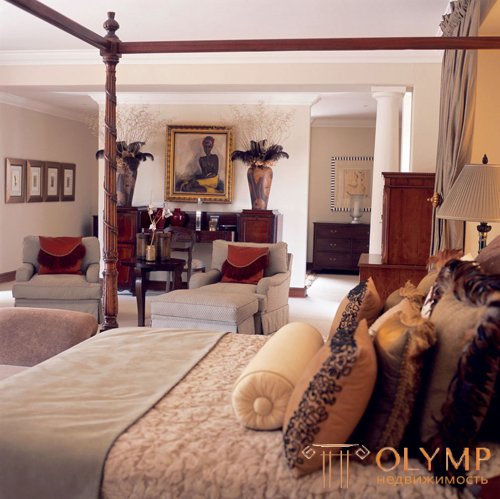
Colonial (from the Latin word "colonus") - colon, so called the Roman settlers, land tenants are usually on the outskirts of the empire, in the province. Style, born at the junction of two worlds - East and West.
Nowadays, the colonial style is associated with exotic, thanks to the harmonious merging of two different cultures - Eastern and European. In its own base, the modern colonial style bears a combination of completely disparate objects, the ability to cooperate with products made from natural materials with the product of the production of cutting-edge technologies.
The interior in the colonial style bears an incredible amount of exoticism so much loved by the modern man; mainly, this furniture and decor items.
The colonial style is Asian nut, reddish Chinese, rubber and tulip trees, yew and rattan - this is an incomplete list of species used to more accurately convey the colonial style in the interior design. Colonial style emphasizes strong rattan furniture that can withstand any climatic conditions. Colonial style extremely distinguishes wicker furniture from water hyacinth, which gives it strength and durability. Bamboo furniture is a colonial style, but in its pure form is very rare, mostly reeds are combined with leather or rattan.
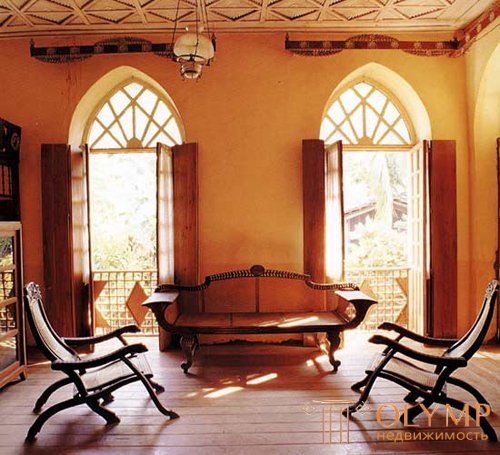
Colonial style in the interior, photo
When creating colonial interiors, you should use natural materials - wood, clay, bronze, leather, ceramics. The color scheme should also match the natural shades: ocher, gold, terracotta, the color of the aged wood, olive.
Colonial style in the interior emerged in the era of maritime expeditions, the discovery and conquest of new lands, when Britain, France, Holland, Spain expanded their own possessions by joining new territories. This epoch was characterized by the interpenetration of cultures: the Europeans brought their culture to the “native” territories, and borrowed from the local population some features of their way of life, dwelling and their interior decoration.
The appearance of the colonial style of architecture and interior design dates from the XVII century. The architecture and interior of New England at that time were considered the standard of simplicity and austerity. The houses were solid oak log houses, the number of paints and decorative products was minimized, the main thing is that the dwelling be reliable. A century later, in the middle of the XVIII century, the interior became more refined, paints appeared. Owners of rich houses bought them in Europe for big money. Americans especially liked azure, vermilion and verdigris. In fact, at that time a simple and crude form of classicism that prevailed in Britain reigned in the interiors.
From an architectural point of view, from about 1700 until the end of the 18th century, the colonial style was a complete replica of the Georgian English style: rectangular houses with simple shapes, symmetrically cut through windows and ridge roofs.
The colonial buildings that appeared in the 18th century were essentially rough copies of the English, French and Italian mansions of the time. In Europe, the late classicism reigned, almost completely reborn in the Empire. Strict forms along with lush interiors served as a starting point when choosing the look of the houses of the New World. With one amendment: the first Americans were not up to aesthetics, because the practicality of all the details of the interior has always been in the first place. Then the secondary role was assigned to the decor and overall design, the main requirement was the strength and reliability of the dwelling. The floors were made of wooden planks, they were rarely painted, the top was covered with homespun carpets and hides.
By the end of the XVIII century, especially in the first years after the formation of the United States, the American public, in a revolutionary spirit, rejected the fashion brought from the Old World. This primarily affected the color scheme. Unlike the conservative English colors, the American approach to color was much more diverse. All rooms began to be painted in different colors, which turned the house into a collection of moods.
In the late XIX - early XX century in the United States began a rapid growth of megacities, at the same time the wealthy segments of the population began to move to the suburbs, where there is more space and greenery. The mansions of those times were spacious and did not differ in special luxury. As before, simple buildings, which retained their asymmetry and closeness to nature, were already wearing a bright and easily recognizable imprint of the American architectural style, primarily expressed in traditionally overhanging roofs, giving the building an unusual appearance.
Nowadays, the colonial style in the interior is again becoming popular: eclecticism is in fashion, creative combining of sometimes incompatible objects, but as a result creating original and very decorative design of the living space. However, today the colonial decor elements are combined with modern decoration materials and technology.
The colonial style contains several directions, which were formed depending on the geographical position of the colony, on the type of activity of the colonialists and on their social level. In addition, the colonial style in Europe and America had a significant difference - the basis of the South American direction of the colonial style was nostalgia, and immigrants from European countries tried to recreate in their own way that way of life to which they were so accustomed in their homeland. The Europeans, in turn, made the colonial style by bringing various exotic souvenirs from their overseas travels and trying to find a place in the interior of the house. The colonial style is special in that, next to the ritual masks of the old Redskins, figures of oriental gods coexist peacefully, ivory animal figures successfully harmonize with rattan furniture.

Colonial style in the interior, photo
The highlight of the design of the colonial interior - the so-called. “Animal” theme. It is very natural for a person with an Eastern attitude to have close relationships of trust with animals; It originated long before the appearance of Europeans in the East. Buddhist legends say that the previous life of the Buddha took place in the images of various animals - an elephant, a monkey, a tortoise; figurines of buffaloes, mountain sheep, deer and lions protected people from evil spirits and endowed their owners with natural forces.
Later, this theme was maintained by artisans engaged in the manufacture of furniture in the colonial style: the legs of tables, sofas, armchairs and chairs were often made in the form of lion legs, and the furniture itself - whether it be a chest of drawers, a table or a chest - repeated the outlines of animals. The colonial-style interior, as a rule, is inhabited by very bizarre inhabitants - monkeys in dress coats carrying a heavy wardrobe, or bronze turtles with a chest on their shells - these were not the most unusual fantasies of Oriental artisans of that time.
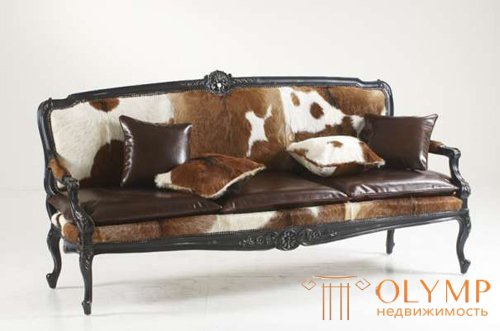
Colonial style in the interior, photo
The basis of these traditions are myths about the origin of man from animals, about the incredible transformations of people into birds, animals, and about marriages between people and wild animals. The ancient masters often saw their ancestors in the image of a particular beast; myths, religious beliefs and reality were intricately intertwined, bringing something primitive into their work. For a European who selected furniture in the colonial style, it was just exotic, but for a person of the Eastern warehouse, the “bestial” theme carried a much deeper, original meaning.
Furniture. Wood furniture for the interior in the colonial style is most often made of teak. rubber and tulip, yew, Asian walnut varieties, Chinese mahogany and finally rattan. Colonial-style furniture, made from the vines of this plant, is notable for its lightness, durability, and complete indifference to weather oddities; Being an ideal option for a country house, such furniture, however, begins to appear in modern city apartments, bringing exotics of the colonial-style interior to the house.

Colonial style in the interior, photo
Many wicker details are another sign of the colonial style, when skillfully woven inserts are used even in the decoration of wooden furniture. But, as a tribute to the European desire for comfort, wicker furniture has soft pillows with removable covers. The fabric covering them is usually the color of natural unbleached linen or covered with a large vegetable pattern.
Furniture in the colonial style, as a rule, is made in a dark color scheme, and against the light walls of natural natural colors, the furniture - its shape, lines and textures of surfaces - will be favorably emphasized.
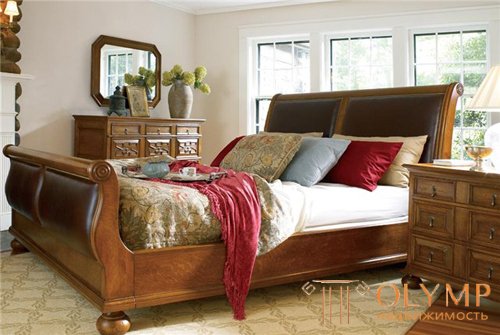
Colonial style in the interior, photo
Floor. As a flooring, ideal for the interior in a colonial style, you can use a wide massive board (for example, stained or bleached oak); light ceramic tiles with a surface styled as a rough stone or brick will also work well. From above you can put a large carpet with a contrasting geometric or floral ornament. The material from which it is made must be natural; Besides the fact that it is pleasant to the touch, it will correspond to the chosen style.

Colonial style in the interior, photo
The floor is usually covered with carpets woven from plant fibers. And the windows from the bright light close the bamboo shutters. Stylish accessories in such interiors are chests, leather and wicker suitcases, travel baskets and traveling bags, as if they personify the “nomadic” life of their longtime owners - the first European settlers. At a later time, having lost their “transport” functions, they simply turned into a convenient and decorative storage of things.
Textile. The choice of fabric in the colonial style was always dictated by the harsh living conditions in the Wild West. The confrontation with nature and the local population, multi-day walk through the endless expanses of the forest required coarse and reliable textiles. Therefore, the most popular material was cloth. From it they sewed clothes, actively used in the decoration of rooms.
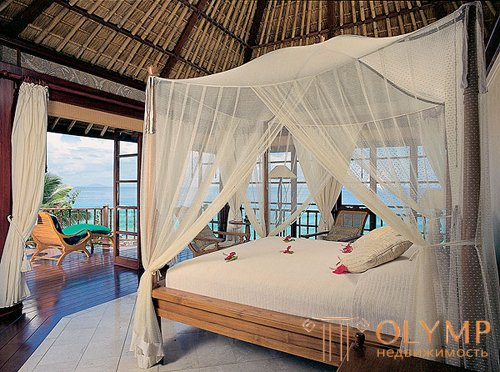
Colonial style in the interior, photo
Wealthy Americans have always preferred expensive silk, velvet and brocade. They were made curtains, tablecloths and bedding, sewed pillows and upholstered furniture. Those who could not afford such luxury could be content with durable and reliable linen or cotton. All fabrics were brought to the mainland across the ocean from the Old World, and therefore the prices for even the simplest textiles were very high. For this reason, up to the middle of the XVIII century, leather and furs were popular throughout North America. These materials were much cheaper than imported silk and velvet, and in terms of quality and durability they gave odds to any, even the coarsest and thickest fabrics.

Colonial style in the interior, photo
Colour. Colonial style requires special attention when using the color palette. During finishing work, you should not abuse the very colorful and challenging decorative materials, because the colonial style prefers natural colors - ocher, gold, aged wood, terracotta and olive. For painting the walls it is preferable to choose natural colors - beige, snow white or pastel colors. The colonial style allows for a combination with wood, bamboo and brickwork. If during the design of the colonial style for the walls you chose a colorful decorative paint, the furniture should be a natural color, and vice versa.
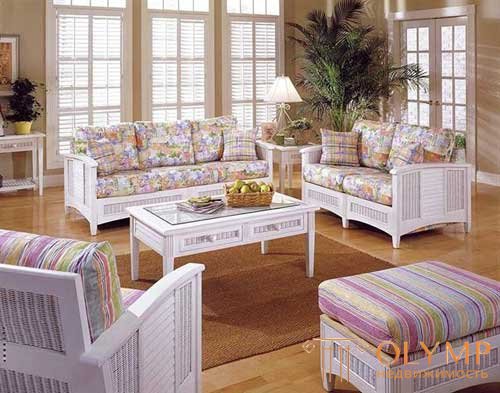
Colonial style in the interior, photo
The decor. Extremely natural, embroidered carpet, mats, or a huge carpet with floral or geometric patterns will look on the floor - this is also a colonial style. The colonial style emphasizes the unusual role of various accessories - it is thanks to them, sometimes unimportant things, that the interior is filled with meaning. Various figurines and candlesticks, wooden chests and wicker suitcases, a bundle of brushwood and carved plates - they subtly emphasize the colonial style.
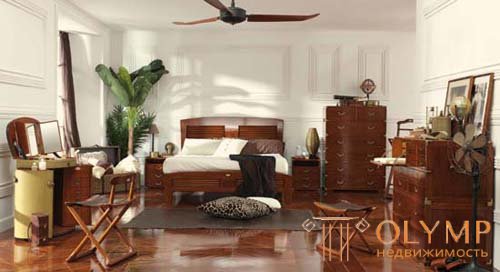
Colonial style in the interior, photo
Colonial style emphasizes the various attributes of a successful hunt for a wild animal. The horns of animals, stuffed birds and photos in wooden frames hung on the walls, more accurately convey the colonial style.
Another fundamental addition to the colonial style is the presence of live vegetation in the interior. Palm trees, ferns, bamboo trunks and exotic flowers in huge clay pots will create a real colonial style and an indescribable feeling of freshness and warmth of tropical undergrowth.
The colonial style that emerged in the 17th century, during the period when Europeans mastered the Wild West, is essentially a mixture of epochal classicism, baroque and rococo. However, by combining these elegant trends into one, the American pioneers have significantly simplified the interior, relying on practicality. The result was a completely rustic style, filled with coarse parodies of the refined elegance of palace interiors.
For passionate travelers and lovers to bring countless souvenirs from overseas trips, the colonial style of the interior is most suitable. Inhaling the indescribable smell of furniture made of natural wood, and admiring the colorful fan on the wall of your living room, you will again and again remember the happy moments that you spent in mysterious India or exotic Vietnam.
The abundance of bright and unusual decor gives the interior in a colonial style a spicy taste of tropical exoticism. Many things in the East are created just for beauty, and the Europeans should not forget about it; and if you add fresh flowers to the interior, you will manage to make it even more alive and natural.
Что бы оставить комментарий войдите
Комментарии (0)